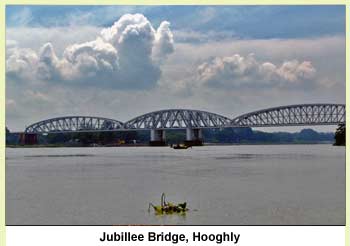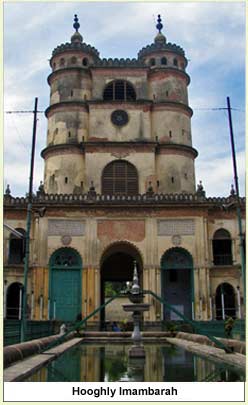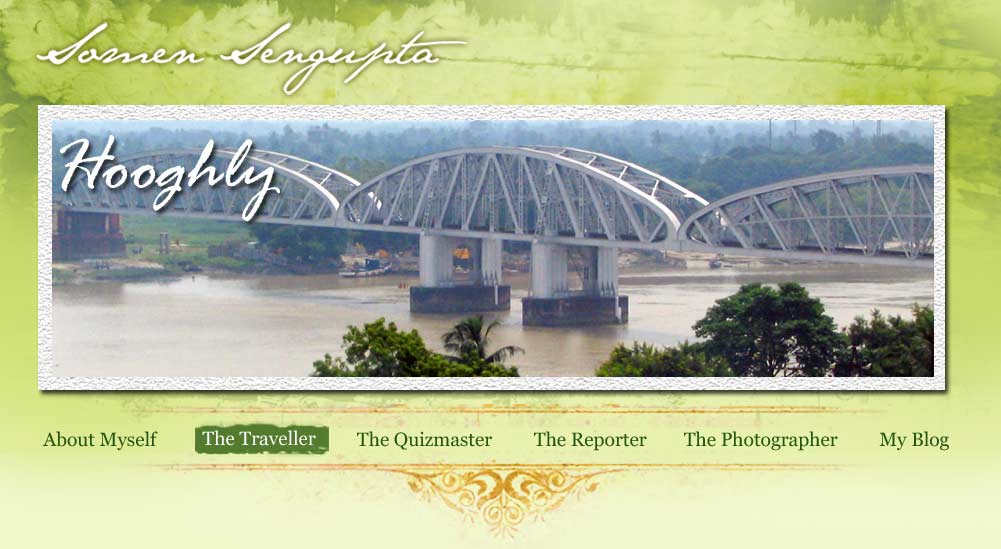| From early 16th century, the banks of the Hooghly were the happy hunting ground of Europeans, who came in the guise of traders but soon turned rulers. The invaders have all left their footprints on the sands of our history and the symbols of our culture. Few influences have been as pronounced as that of the Portuguese. And nowhere is the European influence more evident than in the town of Hooghly.
This now dead port was once the scene of bloodletting by the Portuguese, Dutch, English, Danes, French, Flemish and the Prussians. In the early 16th century, a Portuguese sailor obtained permission from Nawab Mohammed Shah to build a factory and port at Saptagram, on the bank of the Saraswati. The river, however, was too emaciated for navigation and the Portuguese were compelled to look for a new base.
In 1580, emperor Akbar allowed them to set up a port in Bengal, which they named Bandel (which means port in Portuguese) of Ugolim. Many believe Ugolim became Hooghly with the passage of time. Some historians, however, are of the opinion that the abundant growth of elephant grass, which in Bengali is known as hogla pata, gave Hooghly its name.
Development happened apace. The port and the town around it buzzed with the din and bustle of cargo ships from China, Mallaca, Manila and various places in Europe. The name Hooghly caught on so much that in 1795, a new district was christened the Hooghly. By then, the British had brought the area under their control and the port had lost its pre-eminent position to Calcutta. A century earlier, one of Shahjahan?s generals had attacked Hooghly and reduced it to rubble, a setback from which the town never recovered.

The first sight that will capture your attention in modern Hooghly is a majestic rail bridge on the river, known as the Jubilee Bridge. It was designed by the legendary Sir Leslie Bradford and constructed between 1882 and 1886. The 366 m long structure is one of the oldest rail bridges in the world still in use. A boat ride is recommended for the best view.
The biggest attraction in Hooghly is the Imambara, a prime example of Islamic architecture in Bengal. The Imambara came up in the memory of Hazi Mohammed Mohsin. The construction started in 1841, and was completed in 1861, for Rs 31 lakh. Imambara means a place where people assemble for a religious purpose. The magnificent dual towers in front are 80 ft high. A huge clock is set between the towers. It was brought from London at a cost of Rs 12,000. The towers offer a wonderful view of the river and the town. The historic Bandel Church and the Hangseshwari temple of Bansberia are also visible from the top.
There are lovely fountains inside the Imambara and a water tank full of colourful fish. There is even a sun dial. The rooms facing the river have breathtaking chandeliers. For a panoramic view of the Hooghly make your way to the back of the structure. The garden which houses the graves of Mohsin and five of his family members is another tourist attraction in the town.
Travel tips
Hooghly is hardly 1.5 km from the city by local train. Take a cycle-rickshaw to the Imambara. You can cover all the attractions in one day |



